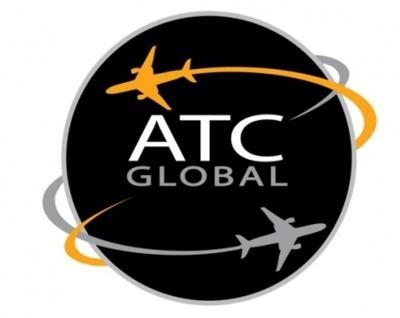ATC Global Demonstrated Possible Scenarios At Recent Virtual Event
The weather is changing and - as over 200 air traffic management (ATM) professionals from around the world learned as part of the ATC Global virtual event held October 17 - air navigation service providers (ANSPs), airports and aircraft operators will have to work increasingly closely to prepare for and mitigate extreme weather conditions, from the sub-Saharan Africa to the northern Europe and the United States.

Participants to the virtual event included representatives from across the industry, encompassing airlines, airport authorities, ANSPs, Governments, academic institutions, technology providers, consultants, military and research institutions.
As the world warms the aviation industry will have to cope with greater levels of weather unpredictability, according to Dr Herbert Puempel, Chief, Aeronautical Meteorology Division at the Geneva based World Meteorological Organisation who participated in the first of two global webinars over the course of the day. Airports in particular will have to develop increasingly capable and customized forecast and mitigation systems, said Nic Nilsen, Managing Director, Oslo Airport, another of the speakers. Nicky Cooper, Head of Network Operations Management, EUROCONTROL, spoke of the need for aviation stakeholders to work together more closely on mitigation measures, given the vulnerability of the overall network to delays and disruption caused by severe weather incidents in a single major hub.
Coping with winter and extreme weather conditions: How the European ATM network works together featured experts from all sides of the industry to access advice, debate issues and share best practice experiences and solutions.
The second session, held later in the day and also moderated by ATC Global Insight Editor Philip Butterworth-Hayes, explored UAV Operators ' experiences of moving towards integrating civil-military UAS into the Single European Sky and globally . ATC experts heard from Gerard Mardiné, EUROCAE UAS Work program Lead, and Member of the European RPAS Steering Group Regulation and Radio Frequency Working Group along with David Gleave, Air Traffic Management safety expert.
In an audience poll, conducted live during the session, most participants did not believe remotely piloted vehicles would be sharing the same controlled airspace as civil traffic by 2018. Some of the issues discussed included how airports and controllers would cope with managing inhabited and uninhabited aircraft in the same airspace, whether collision avoidance technologies would become available for unmanned vehicles and how Europe and the United States are aligned in their airspace management programs in view of these issues.
More than 55 countries were represented, and the online audience included personnel from ANSPs and civil aviation authorities including ENAV, FAA, Austro Control, NATS, Jamaica CAA, Nav Canada, PANSA, SMATSA, Skyguide, Kenya CAA, Naviair, Uganda CAA and ANAC (Argentina).
They were joined by key suppliers and ATM stakeholders such as Indra, Thales, Frequentis, Raytheon, Barco, HITT, Vaisala, Egis Avia, Altran Praxis, Ministry of Transport (Bolivia) European Commission and SESAR, among many others, all coming together on a neutral platform to participate in the interactive debates, network with peers online and source valuable industry information in the resource center.
 ANN's Daily Aero-Linx (05.06.25)
ANN's Daily Aero-Linx (05.06.25) ANN's Daily Aero-Term (05.06.25): Ultrahigh Frequency (UHF)
ANN's Daily Aero-Term (05.06.25): Ultrahigh Frequency (UHF) ANN FAQ: Q&A 101
ANN FAQ: Q&A 101 Classic Aero-TV: Virtual Reality Painting--PPG Leverages Technology for Training
Classic Aero-TV: Virtual Reality Painting--PPG Leverages Technology for Training Airborne 05.02.25: Joby Crewed Milestone, Diamond Club, Canadian Pilot Insurance
Airborne 05.02.25: Joby Crewed Milestone, Diamond Club, Canadian Pilot Insurance



